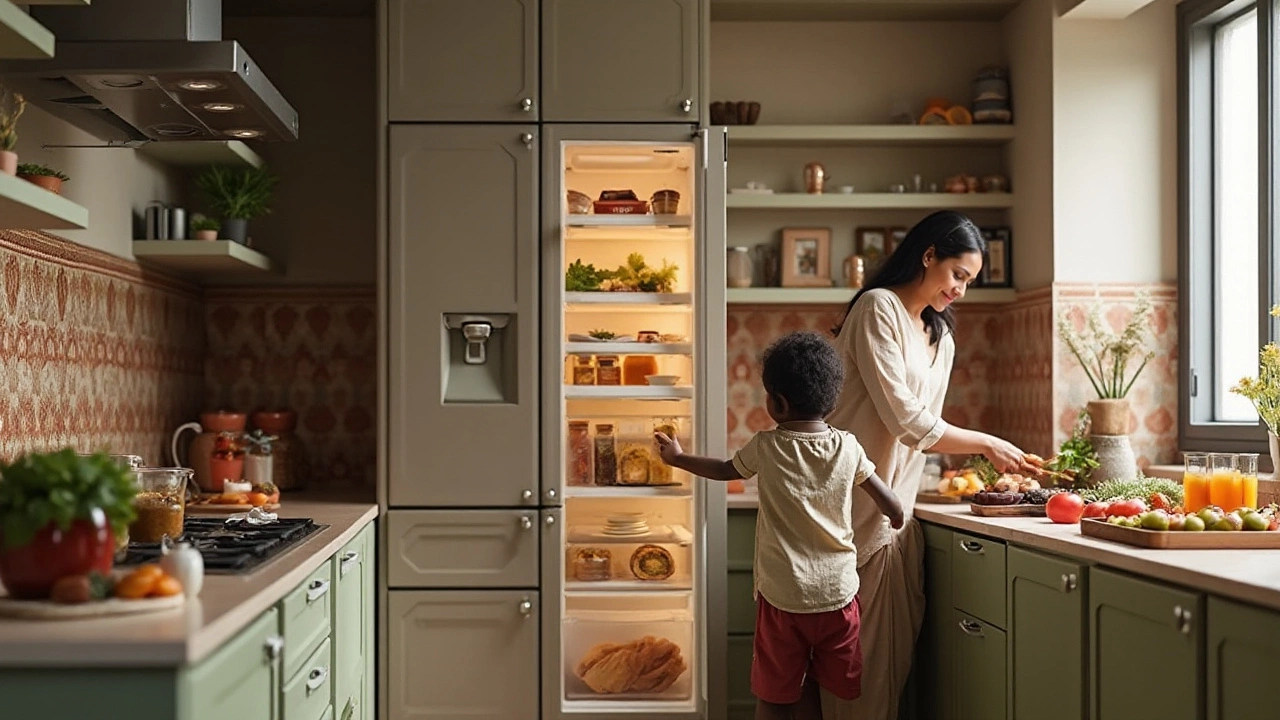Fridge Gap Solutions for a Smarter Kitchen
When dealing with fridge gap, the narrow space left between a refrigerator and adjacent cabinets or walls. Also known as refrigerator gap, it often feels like dead space that could be put to better use. Most homeowners ignore it, but a clever approach can turn that leftover slice into handy shelving, hidden storage, or a stylish design feature. Below we’ll explore how that tiny area connects to bigger kitchen concepts and how you can make it work for you.
First, understand that a kitchen layout, the overall arrangement of appliances, work zones, and traffic flow in a cooking space directly influences the size and shape of the fridge gap. Open‑plan kitchens often leave wider gaps, while tight galley designs shrink them. When you map out your kitchen’s work triangle, you’ll see exactly where the gap falls and whether it interrupts the flow. A well‑planned layout can incorporate that space as a pull‑out pantry or a slim spice rack, turning a potential obstacle into a functional asset.
Next up is cabinet storage, built‑in solutions like shelves, drawers, and organizers that keep kitchen items out of sight. The fridge gap is a perfect candidate for custom cabinet inserts. Think narrow pull‑out shelves that slide into the void, or a recessed drawer for cutting boards and foil. Because the gap is usually shallow, using lightweight materials such as acrylic or thin plywood keeps the hardware easy to install and reduces load on the surrounding cabinets. Adding a few hidden hinges creates a seamless look that blends with the rest of the cabinetry.
Another key player is appliance placement, the strategic positioning of major kitchen appliances to maximize efficiency and aesthetics. When you move the fridge a few inches or swap to a narrower model, the gap size changes dramatically. Choosing a countertop‑height fridge or a built‑in unit can shrink the gap and free up wall space for decorative panels or a slim wine rack. Conversely, deliberately leaving a larger gap allows you to install a tall pull‑out pantry that reaches up to the ceiling, making the most of vertical space.
All these elements—layout, cabinets, and appliance positioning—converge on the concept of food organization. Keeping ingredients within arm’s reach improves cooking speed and reduces clutter on countertops. By turning the fridge gap into a narrow pull‑out bin for fresh produce, you keep items visible, accessible, and properly ventilated. Some homeowners add a small LED strip inside the gap, turning it into a bright mini‑shelf that doubles as a display for specialty jars or decorative containers.
DIY Tips and Budget‑Friendly Ideas
If hiring a carpenter feels overkill, a DIY approach works well for most homeowners. Measure the gap twice—once with the fridge doors open and once closed—to capture the full usable depth. Then, cut a piece of plywood to those dimensions, attach small brackets, and finish with paint that matches your cabinets. For an even quicker fix, adhesive magnetic strips let you hang lightweight spice tins directly on the fridge side, turning the gap into a magnetic pantry. These low‑cost solutions keep the gap functional without a major remodel.
Now that you see how the fridge gap ties into overall kitchen design, you’ll notice the range of possibilities it opens up. Below you’ll find articles that dive deeper into each of these topics—from layout planning and cabinet hacks to appliance choices and storage systems. Whether you’re renovating, tweaking, or just looking for a quick fix, the collection offers practical ideas you can start using today.
